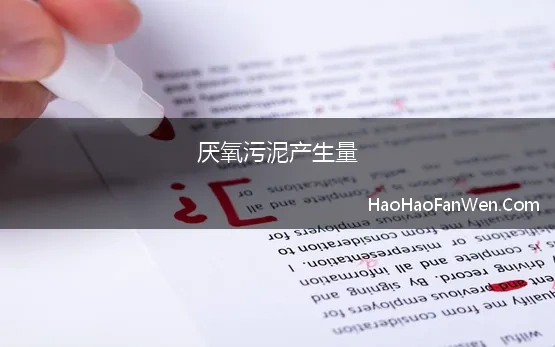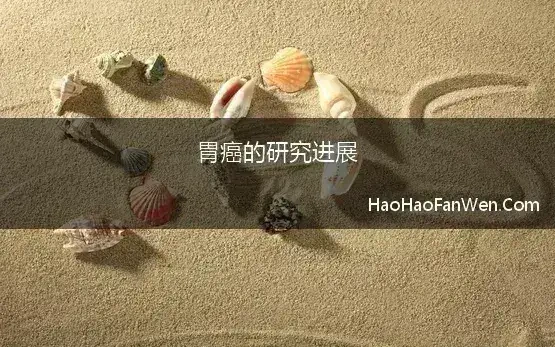厌氧污泥产生量(厌氧氨氧化颗粒污泥EPS的作用、成分及影响因素研究进展)
下面是好好范文网小编收集整理的厌氧污泥产生量(厌氧氨氧化颗粒污泥EPS的作用、成分及影响因素研究进展),仅供参考,欢迎大家阅读!

Abstract: Anaerobic ammonia oxidation (anammox) is a lithoautotrophic biological nitrogen removal process with inherent advantages of low energy consumption, high nitrogen removal loading rate, no external carbon source and low sludge generation, which can be applied for treating wastewater with low C/N ratios. However, due to the slow growth rate of anammox bacteria, biomass is commonly increased by sludge granulation in the anammox reactor. The extracellular polymer substances (EPS) play a vital role in the formation and stabilization of anammox granular sludge. Here, we reviewed the role of EPS in promoting sludge aggregation and maintaining stability during formation of anammox granular sludge, and clarified the major components and functions of EPS. In addition, the particle size of anammox particle sludge, the water quality such as organic matter, nitrogen concentration and nitrogen loading, and the additional mediators such as minerals or metal ions were evaluated on the concentration and composition of EPS of anammox granular sludge. Future research is needed in the field of the micro-analysis of the EPS structure and composition of anammox granular sludge and the enhancement of EPS secretion to promote the rapid formation of granular sludge should be carried out. The ultimate goal of this review is to provide a reference for applying anammox granular sludge technology at large scale.
图 1 厌氧氨氧化菌聚集过程的假说[4]
Figure 1. Hypothesis of Anammox Bacterial Aggregation Process
表 1 不同运行条件下厌氧氨氧化颗粒污泥EPS主要成分
Table 1. The main components of anammox granular sludge EPS under different operating conditions
反应器类型 脱氮负荷/
(kg ·(m3·d)−1)
EPS总量
/( mg·g−1)
EPS成分含量/( mg·g−1) PN/PS 参考文献
PN PS
UASB 0.24 387.23 226.9 140 1.62 [27]
UASB 0.14 105.15±6.63 93.01±6.23 12.15±0.40 7.66 [28]
UASB 0.17 265.2±4.6 164.4±9.3 71.8±2.3 2.29 [29]
UASB 0.30 850 500 350 1.43 [30]
UASB 0.06 174.2 49.2 91.1 0.54 [19]
UASB 0.40 13.35 11.61 1.74 6.67 [31]
UASB 0.19 220.20 114.66 99.71 1.15 [32]
UASB 0.36 334.1 162.37 158.36 1.03 [20]
UASB / 133.7 55.6±3.2 70.8±6.5 0.79 [16]
UASB 5.64 ± 0.2 275.4 171.5 103.9 1.65 [33]
EGSB 1.55 143 97.5 45.5 2.14 [34]
EGSB 0.17 333.03 234.25 90.78 2.58 [35]
SBR 1.12 131.82 94.01 37.81 2.49 [36]
SBR 0.24±0.02 165 140 25 5.60 [37]
SBR 0.125 200 140 60 2.33 [38]
SBBR 0.19 290.92 132.05 106.32 1.24 [39]
A2O 1.01 146.69 90 23 3.91 [40]
注:EPS各成分的含量以每克VSS含有的该成分质量计。
[1] 谢军祥, 姜滢, 常尧枫, 等. 城镇生活污水厌氧氨氧化处理的研究进展[J]. 化工进展, 2020, 39(10): 4175-4184.
[2] ADAMS M, XIE J X, KABORE A W J, et al. Research advances in anammox granular sludge: A review[J]. Critical Reviews in Environmental Science and Technology, 2020: 1-44. doi: 10.1080/10643389.2020.1831358
[3] LIU X W, SHENG G P, YU H Q. Physicochemical characteristics of microbial granules[J]. Biotechnology Advances, 2009, 27(6): 1061-1070. doi: 10.1016/j.biotechadv.2009.05.020
[4] JIA F, YANG Q, LIU X, et al. Stratification of extracellular polymeric substances (EPS) for aggregated anammox microorganisms[J]. Environmental Science & Technology, 2017, 51(6): 3260-3268.
[5] BADIREDDY A R, CHELLAM S, GASSMAN P L, et al. Role of extracellular polymeric substances in bioflocculation of activated sludge microorganisms under glucose-controlled conditions[J]. Water Research, 2010, 44(15): 4505-4516. doi: 10.1016/j.watres.2010.06.024
[6] YIN C, MENG F, CHEN G H. Spectroscopic characterization of extracellular polymeric substances from a mixed culture dominated by ammonia-oxidizing bacteria[J]. Water Research, 2015, 68: 740-749. doi: 10.1016/j.watres.2014.10.046
[7] SHENG G P, YU H-Q, LI X Y. Extracellular polymeric substances (EPS) of microbial aggregates in biological wastewater treatment systems: a review[J]. Biotechnology advances, 2010, 28(6): 882-894. doi: 10.1016/j.biotechadv.2010.08.001
[8] Manonmani U, Joseph K, et al. Granulation of anammox microorganisms for autotrophic nitrogen removal from wastewater[J]. Environmental Chemistry Lethers, 2018, 16(4): 881-901.
[9] 杨敏, 胡学伟, 宁平, 等. 废水生物处理中胞外聚合物(EPS)的研究进展[J]. 工业水处理, 2011, 31(7): 7-12. doi: 10.3969/j.issn.1005-829X.2011.07.002
[10] VLAEMINCK S E, TERADA A, SMETS B F, et al. Aggregate size and architecture determine microbial activity balance for one-stage partial nitritation and anammox[J]. Applied and Environmental Microbiology, 2010, 76(3): 900-999. doi: 10.1128/AEM.02337-09
[11] SEVIOUR T, YUAN Z, LOOSDRECHT M, et al. Aerobic sludge granulation: A tale of two polysaccharides?[J]. Water Research, 2012, 46(15): 4803-4813. doi: 10.1016/j.watres.2012.06.018
[12] 杨帆 王帅, 龙曼, 等. 胞外多糖酶解对Anammox颗粒污泥稳定性的影响[J]. 土木与环境工程学报, 2021, 16(7): 1-9.
[13] 范丹, 李冬, 梁瑜海, 等. 生活污水SNAD颗粒污泥快速启动及脱氮性能研究[J]. 中国环境科学, 2016, 36(11): 3321-3328. doi: 10.3969/j.issn.1000-6923.2016.11.015
[14] NEILSEN P. Extraction of EPS[J]. Berlin:Springer-Verlag, 1999: 47-72.
[15] LI X Y, YANG S F. Influence of loosely bound extracellular polymeric substances (EPS) on the flocculation, sedimentation and dewaterability of activated sludge[J]. Water Research, 2007, 41(5): 1022-1030. doi: 10.1016/j.watres.2006.06.037
[16] NI S-Q, SUN N, YANG H, et al. Distribution of extracellular polymeric substances in anammox granules and their important roles during anammox granulation[J]. Biochemical Engineering Journal, 2015, 101(1): 126-133.
[17] 李惠娟, 彭党聪, 陈国燕, 等. ANAMMOX的快速启动及EPS在ANAMMOX颗粒污泥中的空间分布[J]. 环境科学, 2017, 38(7): 2931-2940.
[18] HOU X, LIU S, ZHANG Z. Role of extracellular polymeric substance in determining the high aggregation ability of anammox sludge[J]. Water Research, 2015, 75(15): 51-62.
[19] CHEN C, JIANG Y, ZOU X, et al. Insight into the influence of particle sizes on characteristics and microbial community in the anammox granular sludge[J]. Journal of Water Process Engineering, 2021, 39: 101883. doi: 10.1016/j.jwpe.2020.101883
[20] ZHU G, WANG S, MA B, et al. Anammox granular sludge in low-ammonium sewage treatment: Not bigger size driving better performance[J]. Water Research, 2018, 142(1): 147-158.
[21] 杨明明. 厌氧氨氧化颗粒污泥胞外聚合物(EPS)及表面特性研究 [D]; 重庆: 重庆大学, 2019.
[22] 王衫允, 贾方旭, 靳鹏飞, 等. 高效厌氧氨氧化颗粒污泥脱氮特征及EPS分层特性[J]. 中国给水排水, 2016, 32(11): 35-39.
[23] 杨明明, 党超军, 张爱余, 等. 厌氧氨氧化颗粒污泥胞外聚合物金属元素特性[J]. 中国环境科学, 2020, 40(11): 4728-4734. doi: 10.3969/j.issn.1000-6923.2020.11.011
[24] TANG C J. Performance of high-loaded ANAMMOX UASB reactors containing granular sludge[J]. Water Research, 2011, 45(1): 135-144. doi: 10.1016/j.watres.2010.08.018
[25] 刘云曼. 胞外多聚物对厌氧氨氧化污泥脱氮性能的影响研究 [D]. 石家庄: 河北科技大学, 2018.
[26] 张倩, 刘晓朋, 张旭, 等. 盐胁迫对厌氧氨氧化污泥脱氮性能及其胞外聚合物特性的影响[J]. 中国海洋大学学报(自然科学版), 2020, 50(7): 117-126.
[27] 张亚超, 张晶, 侯爱月, 等. 胞外聚合物和信号分子对厌氧氨氧化污泥活性的影响[J]. 中国环境科学, 2019, 39(10): 4133-4140. doi: 10.3969/j.issn.1000-6923.2019.10.012
[28] BOLEIJ M, SEVIOUR T, WONG L L, et al. Solubilization and characterization of extracellular proteins from anammox granular sludge[J]. Water Research, 2019, 164(1): 114952.
[29] 唐崇俭, 郑平, 汪彩华, 等. 高负荷厌氧氨氧化EGSB反应器的运行及其颗粒污泥的ECP特性[J]. 化工学报, 2010, 061(3): 732-739.
[30] CHEN J, JI Q, ZHENG P, et al. Floatation and control of granular sludge in a high-rate anammox reactor[J]. Water Research, 2010, 44(11): 3321-3328. doi: 10.1016/j.watres.2010.03.016
[31] 李冬, 田海成, 梁瑜海, 等. 水质条件对厌氧氨氧化颗粒污泥EPS含量的影响[J]. 哈尔滨工业大学学报, 2017, 49(2): 6-12. doi: 10.11918/j.issn.0367-6234.2017.02.002
[32] 宋成康, 王亚宜, 韩海成, 等. 温度降低对厌氧氨氧化脱氮效能及污泥胞外聚合物的影响[J]. 中国环境科学, 2016, 36(7): 2006-2013. doi: 10.3969/j.issn.1000-6923.2016.07.015
[33] 李冬, 王艳菊, 吕育锋, 等. 有机碳源对厌氧氨氧化污泥颗粒化的影响[J]. 哈尔滨工业大学学报, 2018, 50(9): 116-1122. doi: 10.11918/j.issn.0367-6234.201704033
[34] MIAO L, ZHANG Q, WANG S, et al. Characterization of EPS compositions and microbial community in an Anammox SBBR system treating landfill leachate[J]. Bioresource Technology, 2018, 249(2): 108-116.
[35] 郭静. 胞外聚合物对厌氧氨氧化污泥性能的影响研究 [D]. 徐州: 中国矿业大学, 2017.
[36] FRANCO A, ROCA E, LEMA J M. Granulation in high-load denitrifying upflow sludge bed (USB) pulsed reactors[J]. Water Research, 2006, 40(5): 871-80. doi: 10.1016/j.watres.2005.11.044
[37] 吴昌永, 王然登, 彭永臻. 污水处理颗粒污泥技术原理与应用 [M]. 北京: 中国建筑工业出版社, 2011.
[38] 顾澄伟. 厌氧氨氧化颗粒污泥培养及其颗粒特性研究 [D]. 苏州: 苏州科技大学, 2019.
[39] 陈方敏, 顾澄伟, 胡羽婷, 等. 厌氧氨氧化污泥恢复过程中的颗粒特性[J]. 环境科学, 2018, 39(12): 5605-5611.
[40] 王洋. 厌氧氨氧化污泥EPS功能解析及对氮、硫的耦合转化研究 [D]. 西安: 西安建筑科技大学, 2019.
[41] IZADI P, IZADI P, ELDYASTI A. Holistic insights into extracellular polymeric substance (EPS) in anammosx bacterial matrix and the potential sustainable biopolymer recovery: A review[J]. Chemosphere, 2021, 274: 129703. doi: 10.1016/j.chemosphere.2021.129703
[42] BOURVEN I, JOUSSEIN E, GUIBAUD G. Characterisation of the mineral fraction in extracellular polymeric substances (EPS) from activated sludges extracted by eight different methods[J]. Bioresource Technology, 2011, 102(14): 7124-7130. doi: 10.1016/j.biortech.2011.04.058
[43] YAN L, LIU Y, WEN Y, et al. Role and significance of extracellular polymeric substances from granular sludge for simultaneous removal of organic matter and ammonia nitrogen[J]. Bioresource Technology, 2015, 179(1): 460-466.
[44] JIANG H L, TAY J H, YU L, et al. Ca2+ augmentation for enhancement of aerobically grown microbial granules in sludge blanket reactors[J]. Biotechnology Letters, 2003, 25(2): 95-99. doi: 10.1023/A:1021967914544
[45] PEVERE A, GUIBAUD G, HULLEBUSCH E, et al. Effect of Na+ and Ca2+ on the aggregation properties of sieved anaerobic granular sludge[J]. Colloids & Surfaces A Physicochemical & Engineering Aspects, 2007, 306(1/2/3): 142-149.
[46] D'ABZ AC P, BORDAS F, JOUSSEIN E, et al. Characterization of the mineral fraction associated to extracellular polymeric substances (EPS) in anaerobic granular sludges[J]. Environmental Science & Technology, 2010, 44(1): 412.
[47] 许冬冬, 康达, 郭磊艳, 等. 厌氧氨氧化颗粒污泥研究进展[J]. 微生物学通报, 2019, 46(8): 1988-1997.
[48] ZHANG X, LIU Y, LI Z R, et al. Impact of COD/N on anammox granular sludge with different biological carriers[J]. Science of The Total Environment, 2020, 728: 138557. doi: 10.1016/j.scitotenv.2020.138557
[49] LI Y, HUANG Z, RUAN W, et al. ANAMMOX performance, granulation, and microbial response under COD disturbance[J]. Journal of Chemical Technology & Biotechnology, 2015, 90(1): 139-148.
[50] 林志福, 伍健东, 周兴求, 等. 厌氧颗粒污泥胞外聚合物的影响因素研究[J]. 环境工程学报, 2009, 3(7): 1311-1315.
[51] YANG S F, LI X Y. Influences of extracellular polymeric substances (EPS) on the characteristics of activated sludge under non-steady-state conditions[J]. Process Biochemistry, 2009, 44(1): 91-96. doi: 10.1016/j.procbio.2008.09.010
[52] ZHANG Y, MA H, NIU Q, et al. Effects of substrate shock on extracellular polymeric substance (EPS) excretion and characteristics of attached biofilm anammox granules[J]. RSC Advances, 2016, 6(114): 113289-113297. doi: 10.1039/C6RA20097D
[53] WANG W, LI D, LI S, et al. Characteristics and formation mechanism of hollow Anammox granular sludge in low-strength ammonia sewage treatment[J]. Chemical Engineering Journal, 2021, 421: 127766. doi: 10.1016/j.cej.2020.127766
[54] 金慧磊. 厌氧氨氧化颗粒污泥的培养及其脱氮性能研究 [D]. 哈尔滨: 哈尔滨工业大学, 2019.
[55] WANG H, GUO W, LIU B, et al. Edge-nitrogenated biochar for efficient peroxydisulfate activation: An electron transfer mechanism[J]. Water Research, 2019, 160(1): 405-414.
[56] ELREEDY A, ISMAIL S, ALI M, et al. Unraveling the capability of graphene nanosheets and γ-Fe2O3 nanoparticles to stimulate anammox granular sludge[J]. Journal of Environmental Management, 2021, 277: 111495. doi: 10.1016/j.jenvman.2020.111495
[57] XU J-J, CHENG Y-F, XU L Z J, et al. The performance and microbial community in response to MnO2 nanoparticles in anammox granular sludge[J]. Chemosphere, 2019, 233(10): 625-632.
[58] 黄双蕾. 稀土元素对厌氧氨氧化脱氮性能的影响研究 [D]. 南昌: 南昌大学, 2020.
[59] CHENG Y F, LI G F, MA W-J, et al. Resistance of anammox granular sludge to copper nanoparticles and oxytetracycline and restoration of performance[J]. Bioresource Technology, 2020, 307: 123264. doi: 10.1016/j.biortech.2020.123264
[60] SHENG G P, YU H Q, YUE Z. Factors influencing the production of extracellular polymeric substances by Rhodopseudomonas acidophila[J]. International Biodeterioration & Biodegradation, 2006, 58(2): 89-93.
[61] FANG F, YANG M-M, WANG H, et al. Effect of high salinity in wastewater on surface properties of anammox granular sludge[J]. Chemosphere, 2018, 210: 366-375. doi: 10.1016/j.chemosphere.2018.07.038
[62] WANG Z, GAO M, WANG Z, et al. Effect of salinity on extracellular polymeric substances of activated sludge from an anoxic–aerobic sequencing batch reactor[J]. Chemosphere, 2013, 93(11): 2789-2795. doi: 10.1016/j.chemosphere.2013.09.038
[63] ZHANG C, LI L, WANG Y, et al. Enhancement of the ANAMMOX bacteria activity and granule stability through pulsed electric field at a lower temperature (16 ± 1 °C)[J]. Bioresource Technology, 2019, 292: 121960. doi: 10.1016/j.biortech.2019.121960
[64] ZHANG J, LI J, ZHAO B H, et al. Long-term effects of N-acyl-homoserine lactone-based quorum sensing on the characteristics of ANAMMOX granules in high-loaded reactors[J]. Chemosphere, 2019, 218(3): 632-642.
















